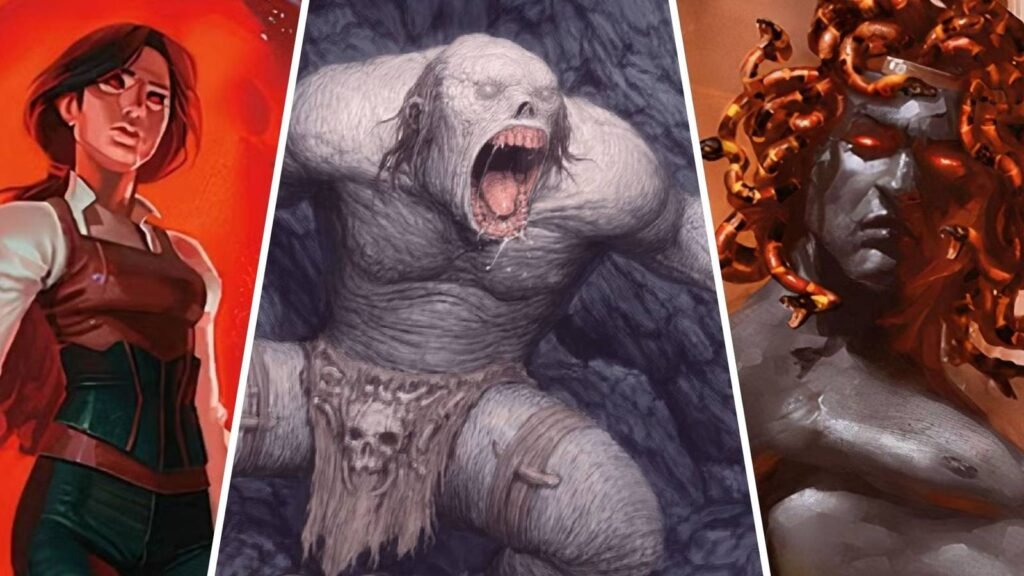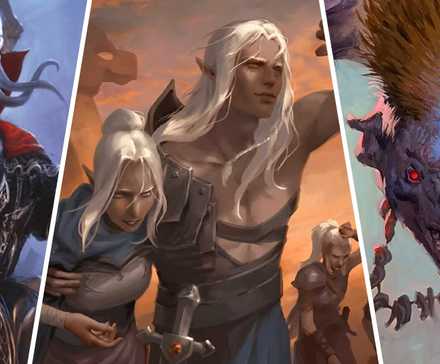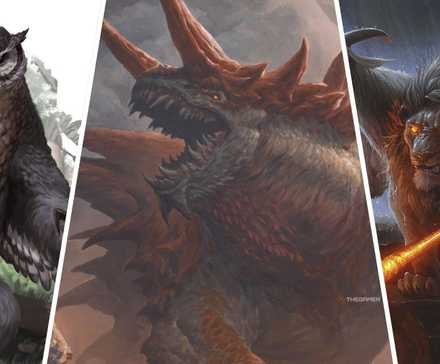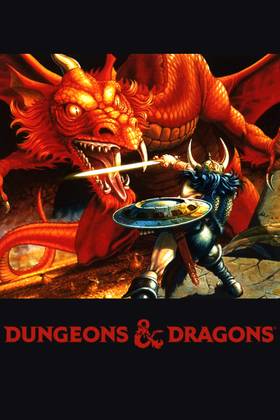
While evil for the sake of evil is a fantastic premise for villains in Dungeons & Dragons, it’s not the only way to go about it. A more complex villain will have a backstory and motivations that explain why they do what they do. For a person to be villainous, they must have gone through some pretty bad moments in their life.
Thus, whether you want your players to sympathize with the villain or you simply want to craft a compelling story to improve your roleplaying, adding some tragedy to them is beneficial. And many monsters from D&D already have tragedy to them, as you can’t just be one of these creatures without severe consequences.
10
Vampires
Good Ol’ Curse
From many mythologies to different types of media, most of us are familiar with vampires. The curse of the Vampyr is just as twisted here as it is in most iterations, where the person is cursed to a never-ending, painful life sucking the blood of others.
D&D thus has the added relationship between vampire masters and their spawns, where you can use your curse to enslave others in another never-ending cycle of control, where the only way out of being a spawn is the trust of your master.
9
Werecreatures
Good Ol’ Curse, Part Two
Lycanthropy, despite the name, comes in many forms here in D&D. Still, whether you’re a werewolf, wererat, wereboar, etc., they all come with monstrous transformations that you either learn to master or kill everyone around you.
There is the hope of controlling the transformation, but you’ll either have to concede to the form’s alignment (going evil in the process), or you truly need to master it, something that is extremely rare – it’d make for a great character arc, though.
8
Mind Flayers
Tainted Copy Of You
As demonstrated in Baldur’s Gate 3, turning into a mind flayer is a true horror. The tadpoles they put in your head will consume you and turn your body into a monster, and the creature will keep your memories and live on as a twisted version of you while you’re dead.
Everyone you love will have to endure fighting this monstrous version of you, who keeps your memories, as stated, but won’t share your emotions and will focus on doing whatever it takes to survive, even if it means eating their loved ones’ brains.
7
Revenants
Ghosts Work, Too
The idea of using ghosts is already tragic enough. Some unfinished business keeps them from going to the afterlife, and depending on what this said business is, you can make a somber and endearing story.

These 10 Monsters Changed Dramatically In Dungeons & Dragons
Here are the best monsters that have changed dramatically in D&D.
That said, you can go further with the revenant, as their unfinished business is fueled by hatred for someone else, making them powerful monsters bent on exacting their vengeance and willing to destroy anything in their path to achieve it.
6
Flesh Golems
Frankenstein’s Monsters
A creature with no soul, who never asked to be born, is made of body parts from different people and can only act based on instinct or the faint memories that come from said body parts. That is the sad and intimidating flesh golem.
This story can be particularly tragic if the victim of these cruel experiments also involves an NPC the players loved – though, to be fair, that applies to this list as a whole. Still, seeing a person reduced to nothing more than a broken puppet is twisted in every way.
5
Grimlocks
Mind Flayer Meets Flesh Golem
Now, let’s combine two previous ideas into one. Mind Flayers are intelligent, and they conduct their own experiments with humanoids they’re not interested in consuming. With experiments that resemble a relationship between a flesh golem and its creator, you can have a grimlock.
These former humanoids are shells of their former selves, turned into obedient monsters that serve as henchmen for mind flayers, protecting their lairs, hunting potential food for them, or fulfilling whatever else they need.
4
Deathlocks
Failed Warlocks
Deathlocks are somewhat similar to ghosts; they’re undead beings with unfinished business. However, instead of being undead due to their will, they’re reanimated by their patrons, so these former warlocks can succeed at whatever they failed at in life.
Warlocks forced to come back from death is an interesting and sad concept, and it’s particularly effective if your party has a warlock – perhaps with the same patron – showing them what lies ahead if they fail at their task.
3
Medusas
Petrifying Monsters
Heavily inspired by Greek mythology, the medusas are based on the creature of the same name, who was cursed to turn everyone who looked into their eyes into stone. Though the source of the curse can vary in D&D, the concept is the same.

Dungeons & Dragons: 8 Best Monstrosities In The 2025 Monster Manual
They’re not natural, except when they are.
Most of them live in isolation, fearing turning people or afraid to show their twisted appearances, while some try to use their curses to terrify others into submission. Some even try to befriend creatures immune to being petrified, like gargoyles or the aforementioned grimlocks – who aren’t immune to the condition but are blind, so they can’t see a medusa’s eyes.
2
Oblexes
Tainted Memories
Mind Flayers strike again, creating yet another tragic monster through their experiments. These oozes were created from memories, and their goal is to consume even more memories from the people they hunt.
They can create replicas of the people they have absorbed to use as bait for others, and when they start accumulating too many memories, it can even affect their behavior, acting as if these memories belong to them, creating a tainted personality based on the people they have consumed.
1
Gibbering Mouthers
DIY Curse
Gibbering Mouthers follows a similar premise to a curse or experiment, but they’re a bit more generic. That means it’s up to you, DM, to decide how the NPC turned into this, whether you’ll follow suggestions from the book or do your own thing.
The book suggests curses, experimentation, a spell that went wrong, or a shapeshifter who lost control of their transformation, among other things. If you need to improvise an NPC doing something bad that requires a painful result, turning the person into a gibbering mouther is an excellent option.

- Original Release Date
-
1974
- Player Count
-
2+
- Age Recommendation
-
12+ (though younger can play and enjoy)
- Length per Game
-
From 60 minutes to hours on end.
- Franchise Name
-
Dungeons & Dragons
- Publishing Co
-
Wizards of the Coast











